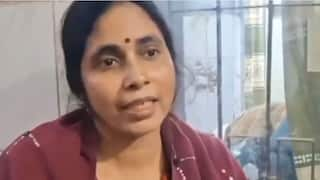‘With Second Developmental Flight, We Will Become Completely Successful…’: ISRO Chief Somanath After SSLV-D1 Upset
After SSLV-D1 failed to place Microsat 2A & AzaadiSAT in the right orbit, S Somanath said that ISRO will soon come back with the launch of the second developmental flight of SSLV, the SSLV-D2 mission.

The Indian Space Research Organisation’s (ISRO’s) Small Satellite Launch Vehicle (SSLV) failed to place the satellites Microsat 2A and AzaadiSAT into the intended circular orbit, as a result of which the satellites are no longer usable. In a video released by ISRO, S Somanath, chairman of the Indian space agency, said that an anomaly was noticed in the placement of the satellites into orbit, and that they were placed in an elliptical orbit in place of a circular orbit.
However, the ISRO Chief said that the Indian space agency will soon come back with the launch of the second developmental flight of SSLV, the SSLV-D2 mission. He also said that with SSLV-D2, ISRO is hoping to become completely successful in proving the capability of SSLV to place satellites in the intended orbit for commercial use.
SSLV-D1, the maiden mission of India's smallest launch vehicle that took flight on Sunday, August 7, was supposed to place the two satellites into a 356-kilometre circular orbit. However, the satellites have instead been placed into an elliptical orbit. ISRO said in a mission update that the issue is reasonably identified, and that the "failure of a logic to identify a sensor failure and go for a salvage action caused the deviation".
Somanath said that SSLV placed the satellites into a 356 km × 76 km orbit. He explained that when satellites are placed in such an orbit, the orbit will not stay for a long time. Due to the atmospheric drag, the satellites will come down.
He said that the satellites have already started coming down from that orbit and are no longer usable.
"We found that this issue related to the SSLV has been reasonably identified but we will go deeper into it," Somanath said.
He also said that every new element incorporated in the rocket performed very well, including the propulsion stages, all hardware, aerodynamic designs, new generation and low cost control electronics, new control systems, and separation systems.
Somanath said that ISRO will identify the specific problem and why the satellites went into an unintended orbit.
"We hope that with the small corrections and further revalidation of those corrections through an adequate number of tests, we will come back for launch of the next developmental flight of SSLV, the SSLV-D2, very soon," he added.
"We are hoping that with the second developmental flight, we will become completely successful in proving the vehicle to place satellites in the intended orbit for all commercial use for India and the whole world," Somanath further said.
ALSO READ | SSLV-D1: Microsat 2A And AzaadiSAT No Longer Usable As They Failed To Reach Intended Orbit, ISRO Says
The SSLV-D1 mission took off from First Launch Pad, Satish Dhawan Space Centre in Sriharikota, Andhra Pradesh, at 9:18 am IST. The primary payload of SSLV was Microsat 2A, an Earth Observation Satellite also known as EOS-02. AzaadiSAT, an eight-kilogram CubeSat built by 750 girl students from 75 schools across India, was also launched into space as a co-passenger on India's latest launch vehicle.
Related Video
Southern Rising Summit 2024: How Important is Self-Awareness? Insights from Anu Aacharya | ABP LIVE





































